Should I kite? Should I windsurf? Which is easier?
The debate continues. The battle of the boards rages on, at beaches throughout the world, as windsurfers think of learning kiting, and kiters think of learning to windsurf.
And newbie beach-goers think of learning one of them.
Both sports are thought of as extreme, and both combine skill with the rush of adrenaline as you skim, fly or soar above the water.
Let’s take a look at both sports.
- Different Learning Curves
- Equipment – Big Differences
- Safety in Both Sports
- Wind & Space Requirements
- Skill Ceiling
- Conclusion
- You Might Also Like…
Disclosure: this post contains affiliate links (clearly marked with ), which means we may earn a commission if you buy something through them, at no additional cost to you.
Different Learning Curves
Windsurfing and kiteboarding use a sail and board on the water, but that is where the similarities end, except that both of these sports are extremely exciting and offer a physical challenge that is not for everyone.
Both of these sports call for a type of physical stamina that can be built up; physical strength is not a requirement.
They do have different time frames when it comes to learning and then getting better or heading to mastery.
Learning to Windsurf – Faster Basic Skills
Some people who have learned this sport found that after several hours they could stay on the board and take a run, especially if a puff of wind came up.
By the second day, they were out on the water. However, learning to tack and jibe effectively might require longer, and water starts, as opposed to beach starts, are an additional skill to learn.
Three hours initially, then gradual improvement over months, make windsurfing appear somewhat easy to learn.
Upper body strength is needed in this sport; however, it can be developed over time as you advance through the learning curve. Uphauling begins to strengthen back muscles.
Some beginners, myself included, have found that back problems go away as they learn to windsurf, if exercise is done gradually, good lifting techniques are employed, and the muscles are strengthened. Additionally, the right equipment helps you to learn faster.
As I mentioned in a previous post, I learned about equipment the hard way when beginning.
Boards were narrower, and balancing was somewhat more difficult. I borrowed the rig of a friend, as he took me to a northern California lake for practice.
The wind was light, so that was in my favor. However, his sail was 5.5 square meters, a bit much for a petite newbie and a lightweight (in weight as well as skill).
I could not get the sail out of the water as I tried unsuccessfully to uphaul a “giant” sail filled with water. Drifting out to sea on the lake, my friend came out from shore and retrieved me.
I quickly learned that the right equipment as well as know-how is a large part of learning to windsurf. Many months later, I learned the right technique for getting the water out of a sunken sail when uphauling.
Technique is imperative in this sport, and you do not want to fight against the wind. Learning to work with the wind is the big secret to getting better as a windsurfer.
Working with the wind as well as knowing about safety are two reasons to take windsurfing lessons rather than just trying the board of a well-meaning friend.
Learning to Kitesurf – Less Strength but More Time
Sometimes people who already know how to windsurf will turn to kitesurfing for lower-wind days. Others just are intrigued by the site of people flying in the air or doing tricks above the water.
With no experience in this water sport, they decide to learn kitesurfing. From a point of view of a well-seasoned windsurfer, kiteboarding seems easy.
Kitesurfing for beginners does not require the same strength as windsurfing for beginners.
You must be at least 40 lbs, so children can learn with a small kite.
Upper body strength, as needed for windsurfing, is not required; traction from the kite goes into the harness, and arm strength is not a requirement.
However, it takes somewhere between 10 and 20 hours to learn how to kitesurf. Learning how to ride confidently upwind requires a set of flying skills as well as board skills and knowing how to combine both of them effectively.
The learning curve for kiteboarding is slower and steeper. You will first have to fly a kite out on dry land to get used to the feel of flying a sail. Initial flying skills on land include:
- Getting used to flying a small kite
- Turning it around
- Getting it powered up
- Feeling the traction
Knowing how to land your kite safely is part of your first flying skills.
The next step would be learning to get body-dragged by the kite without the board. You’ll also be learning self-rescue techniques.
Water starting is the next lesson. You will now be using your board in combination with your sail.
The final beginning lesson is more fun, and that is learning how to ride.
Safety is an important part of learning both of these sports and should be part of every lesson. Read further for more details.
Equipment – Big Differences
As far as equipment goes, windsurfing is certainly not easier than kiteboarding! Learning to lug around a bunch of equipment and enjoying it is part of loving the sport of windsurfing.
Windsurfing requires a range of equipment in case the wind changes. A drop in the wind might call for another board choice, so you bring a high wind board as well as one for lower wind.
I learned about board and sail size the hard way, as one early day at South Padre Island, I sailed out, upwind from kiteboarders. The winds seemed to be quite strong when I went out, so I selected my small board with little flotation.
I was not far out when the wind died, but was in deep water where I could not stand. Whenever I tried to waterstart, there was not enough wind.
Slowly the board was drifting, drifting, drifting downwind. Before I knew it, I was south of the windsurf beach and surrounded by kitesurfers.
Exhausted, I watched as newbie kiteboarders were retrieved by a jet ski. Finally, at last, a puff of wind was enough to get me out of the water onto my board, where I held on for dear life until I reached shore.
Anxious to launch, I think I did not wear my life vest that day; several equipment lessons were learned.
Some equipment that a windsurfer might have in their car, truck or van includes:
- one or two or more boards
- Several sails
- Mast
- Boom
- Mast base
- Assorted screws, bolts, etc.
- Wetsuit
- booties
- PFD (safety vest)
- harness and lines
- emergency whistle
On the other hand, a kiteboarder can have:
- Board
- Kite
- Harness and control bar
- Flotation vest
- Helmet
- Pump for inflation
There seems to be quite a difference between the two sports when it comes to equipment – windsurfing is not easier. What’s more, the kiteboarder can own a smaller car.
Both sports require approximately the same initial cost with windsurfing, with its range of equipment, being a bit more expensive. Used equipment is not recommended for those who kiteboard, as line strength is difficult to determine.
Brand new equipment in both sports will cost $1000 or more. Used equipment is possible to find in windsurfing; buying used equipment should be followed by lessons, if just beginning to windsurf.
Safety in Both Sports
While both sports are adrenaline-producing, the safety aspect of both windsurfing and kitesurfing is an important part of learning the sport.
Safety Rules in Windsurfing
Windsurfers need to learn some basic safety rules before going out. These include:
- Stay with the board, never leave it and try to swim alone
- Always wear a USCG life vest or jacket with whistle
- Always windsurf with a buddy, never alone
- Do not sail in offshore winds
- Let friends onshore know your sailing plan
- Always check the weather before going out
- Always check your equipment before heading out
In addition to this, have the right wetsuit in cool weather. In summer, drink abundant water to prevent heat exhaustion.
Know the signs of hypothermia and that cold can kill. If you begin to shiver, head to shore.
Windsurfers must also know the rules of the road and give way when overtaking any watercraft.
Knowing about the right-of-way, adapted from sailing, is important to the learning of windsurfing.
Kitesurfing Safety
Knowing about safety is also imperative for the beginning kitesurfer. After taking the first lesson, kiteboarders should:
- Get to level 3 before independently kitesurfing
- Learn to assess spot and obstacles
- Read the forecast
- Know the rules
- Check your equipment and lines
- Know how to self-rescue
- Don’t go alone
- Never kite in offshore winds
Before launching a kite, the kiteboarder must assess the speed and direction of the wind as well as the ocean and the swell size, tides and currents.
Wind & Space Requirements
Some experienced windsurfers choose to kite on light-wind days, once they know both sports. Although there is freestyle for windsurfing on light wind days, eager windsurfers will choose to go kitesurfing for their excitement.
If you live near an inland lake, windsurfing can be a great pastime, on windy days as well as in calmer winds for freestyle, cruising around, or family fun.
Limiting to those who live inland, on the other hand, kitesurfing on a lake requires no interference from trees and a space to land and launch safely.
When thinking of a lake for kitesurfing, think more like Lake Michigan. With access to the Gulf or one of the Oceans, either sport can be enjoyed.
Options During the Winter
Once you are a “master” and the summer is over, there are alternatives.
If you live in a snowy spot, there is always snowkiting.
For windsurfing fanatics, snow offers the chance for snow sailing.
Skill Ceiling
You might think not just which is easier, but which is the easier sport to keep doing?
Unless you are committed to practicing and doing a sport, you will never get better to a point where it is really enjoyable. The learning experience goes on.
Beginning board sailors in windsurfing make the sport look easy once they are making runs on the first day.
However, becoming a good windsurfer takes many months and years, as there is always more to learn, different wind conditions to master and tricks or air to discover.
From lakes to surf sailing to racing, new challenges in windsurfing are always waiting for you.
According to my friend, Mike, who, over the years, has done both windsurfing and kiteboarding, “Windsurfing is easier to start to learn, but more difficult to master than kitesurfing.”
Conclusion
Windsurfing is not easier than kiteboarding, although it may seem so, since the beginning learning curve is initially shorter.
Both sports require lessons and knowledge of the wind and safety. Whichever you choose will depend on where you live, what wind conditions are common, how often you go, or where you will be traveling.
With professional supervision, you will have a great time; both sports are exciting with the right instruction. Easy?
Neither of these sports is easy, but both are extremely fun if done safely and correctly.
You Might Also Like…
-
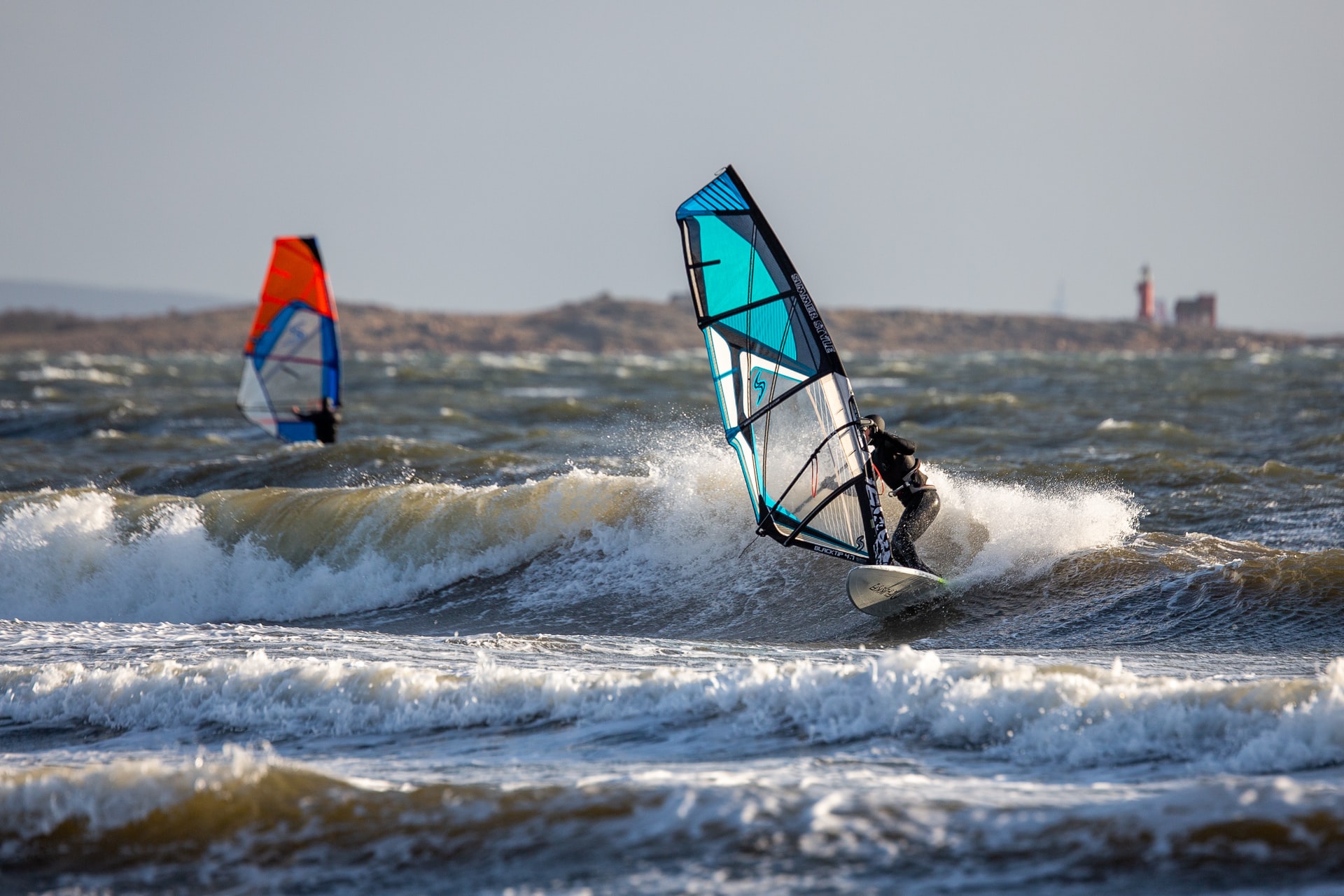
Surfing vs. Windsurfing: 8 Major Differences (& 4 Similarities)
-
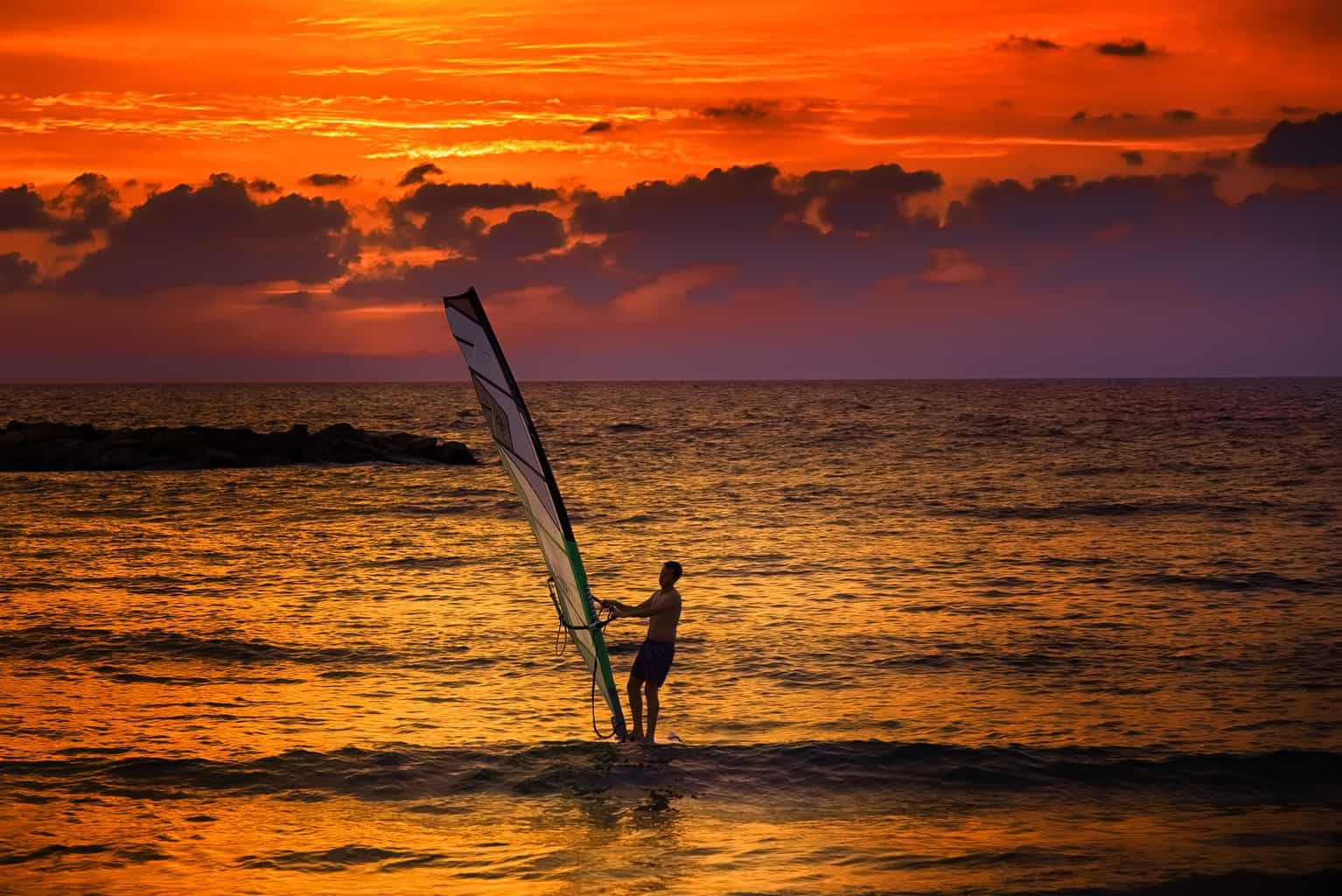
How Does Windsurfing Affect the Environment? (+8 Practical Tips)
-
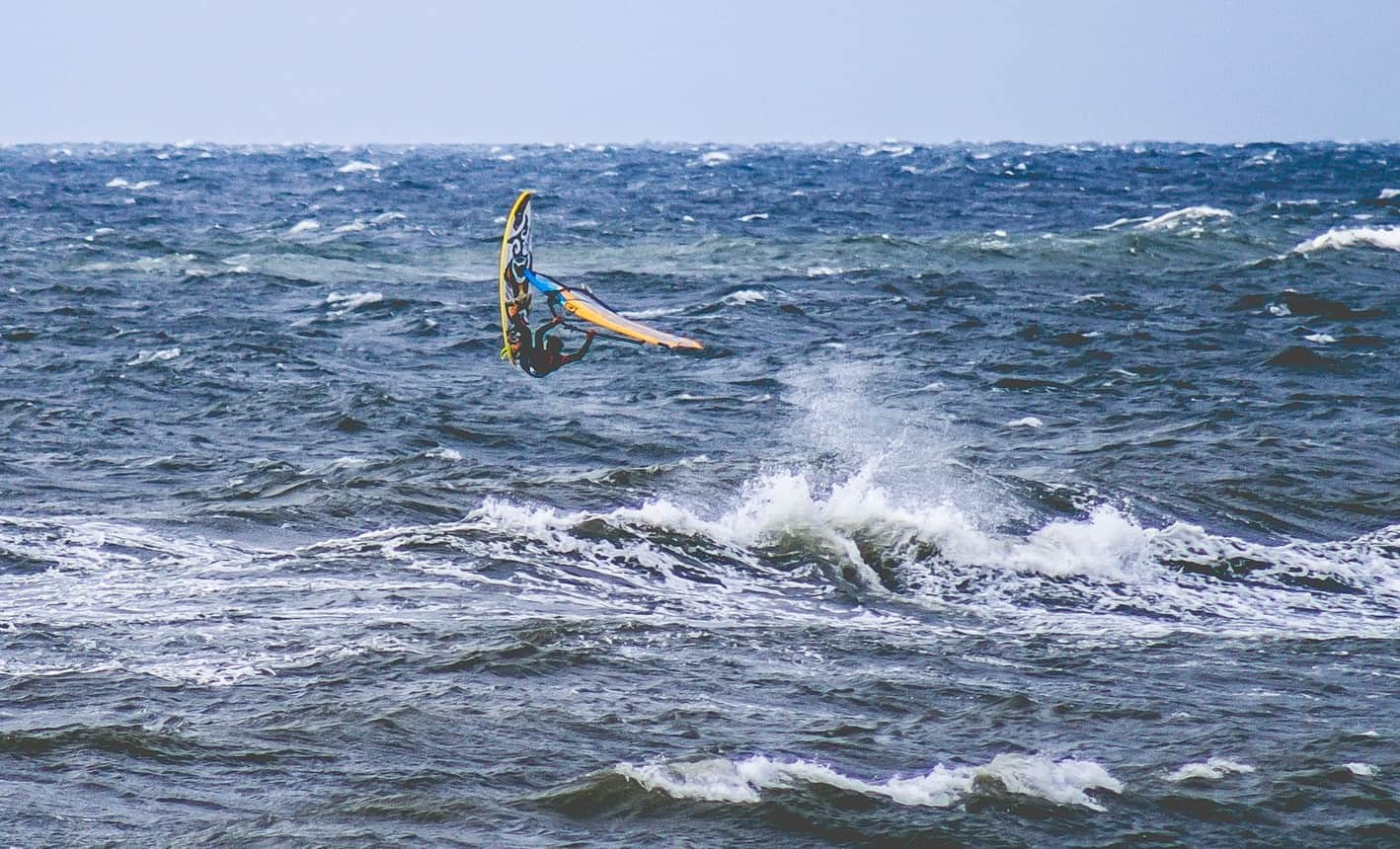
Is Windsurfing Dangerous? 14 Risks (& How to Avoid Them)
-
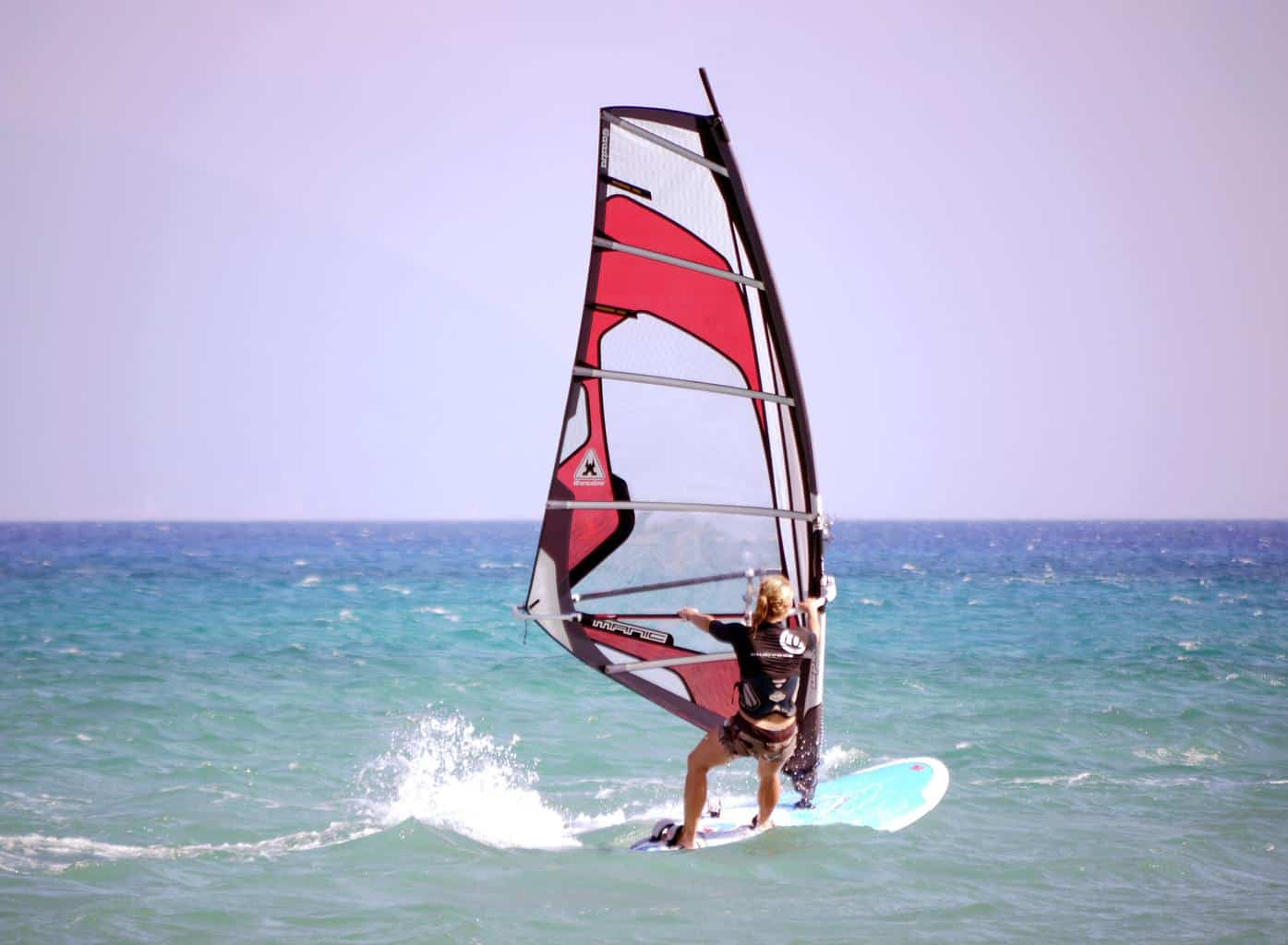
Windsurfing – 7 Common Beginner Questions (Answered)
-
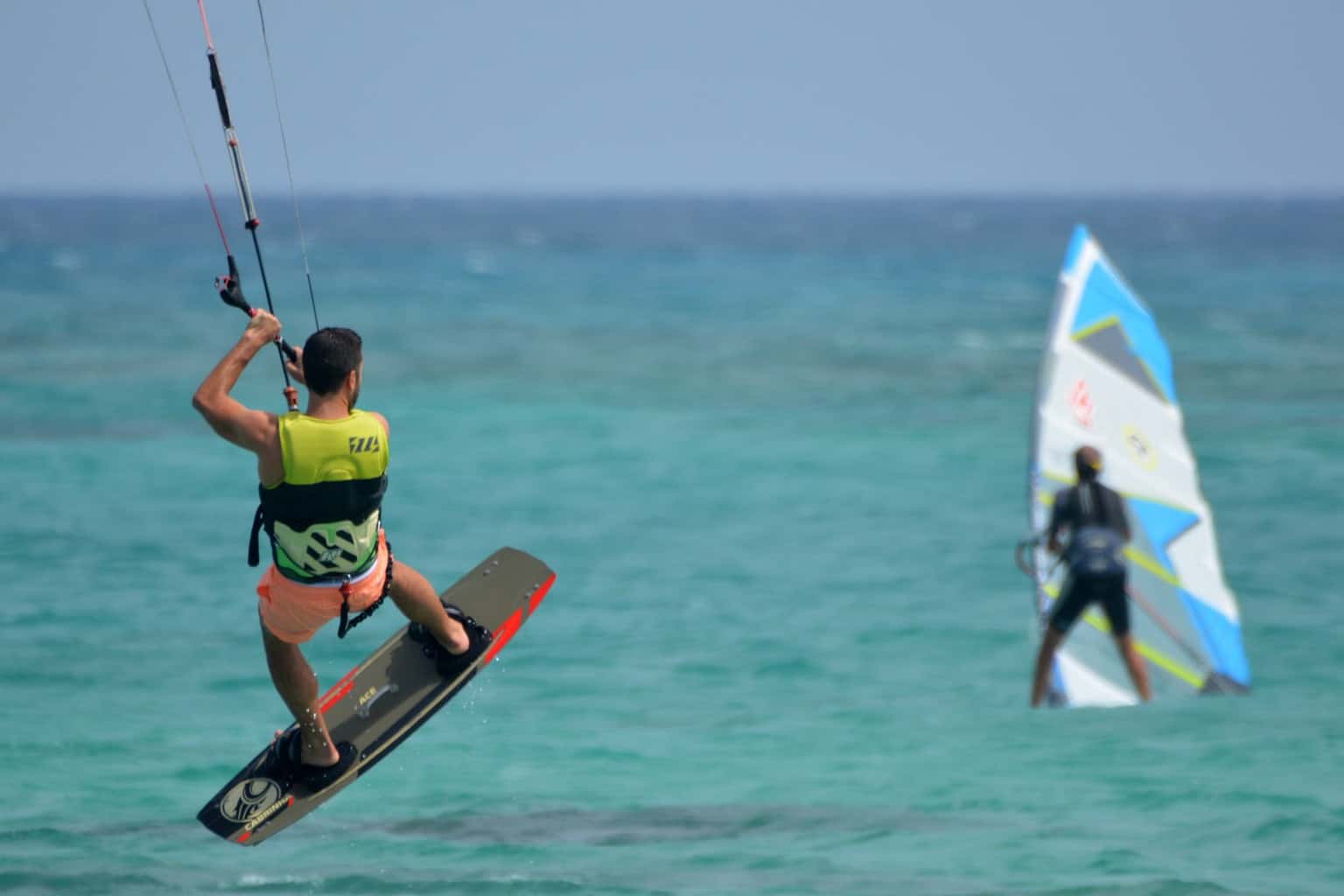
Is Windsurfing Faster Than Kitesurfing? (An Honest Look at the Facts)
-
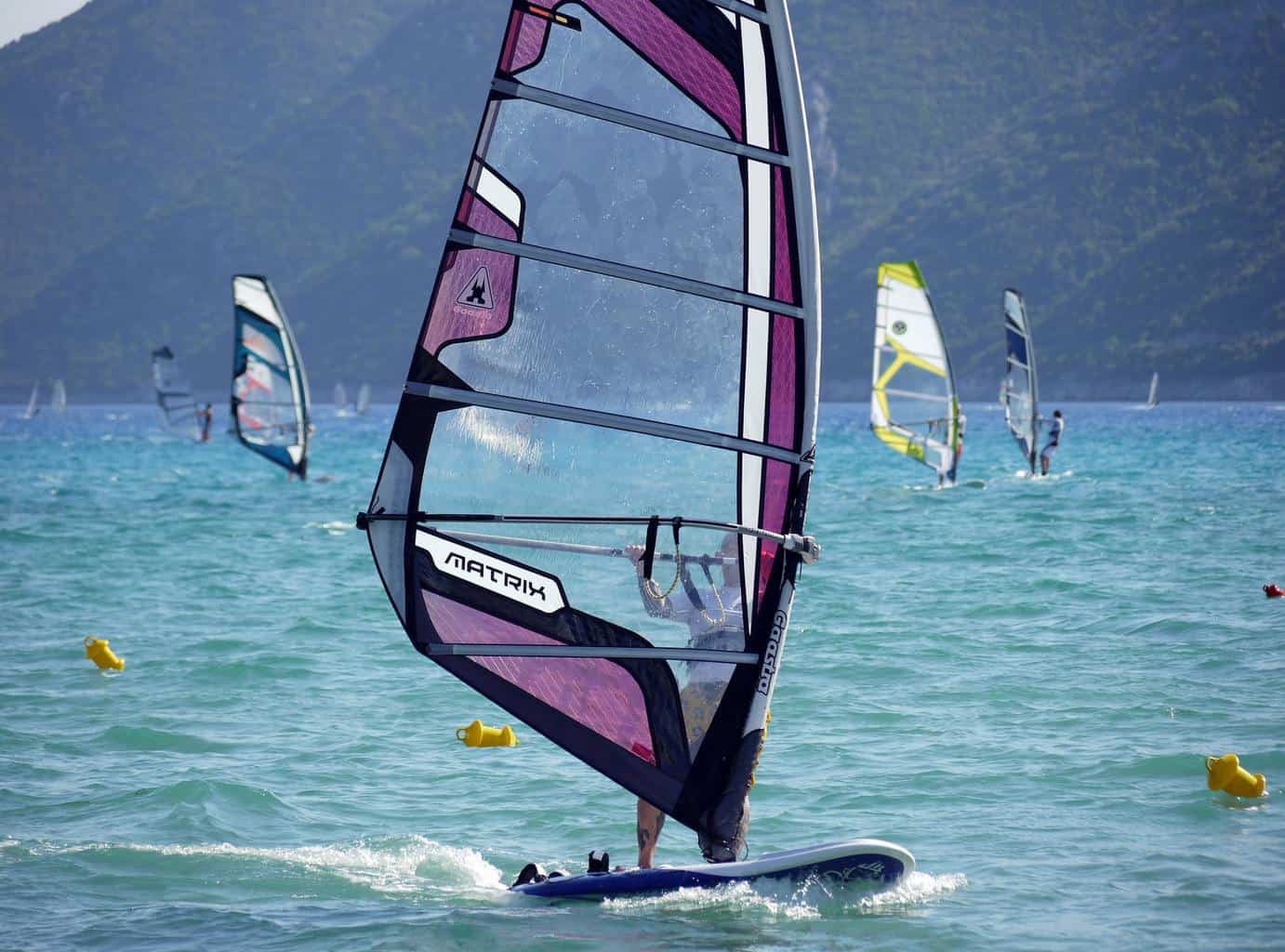
How to Choose the Right Windsurfing Sail Size (With Chart)
-

Windsurfing: How Much Downhaul Is Needed? (Essential Facts)
-

Is Windsurfing an Extreme Sport? (All You Need to Know)
-

Is Windsurfing Easier Than Kitesurfing? (An Honest Comparison)
-
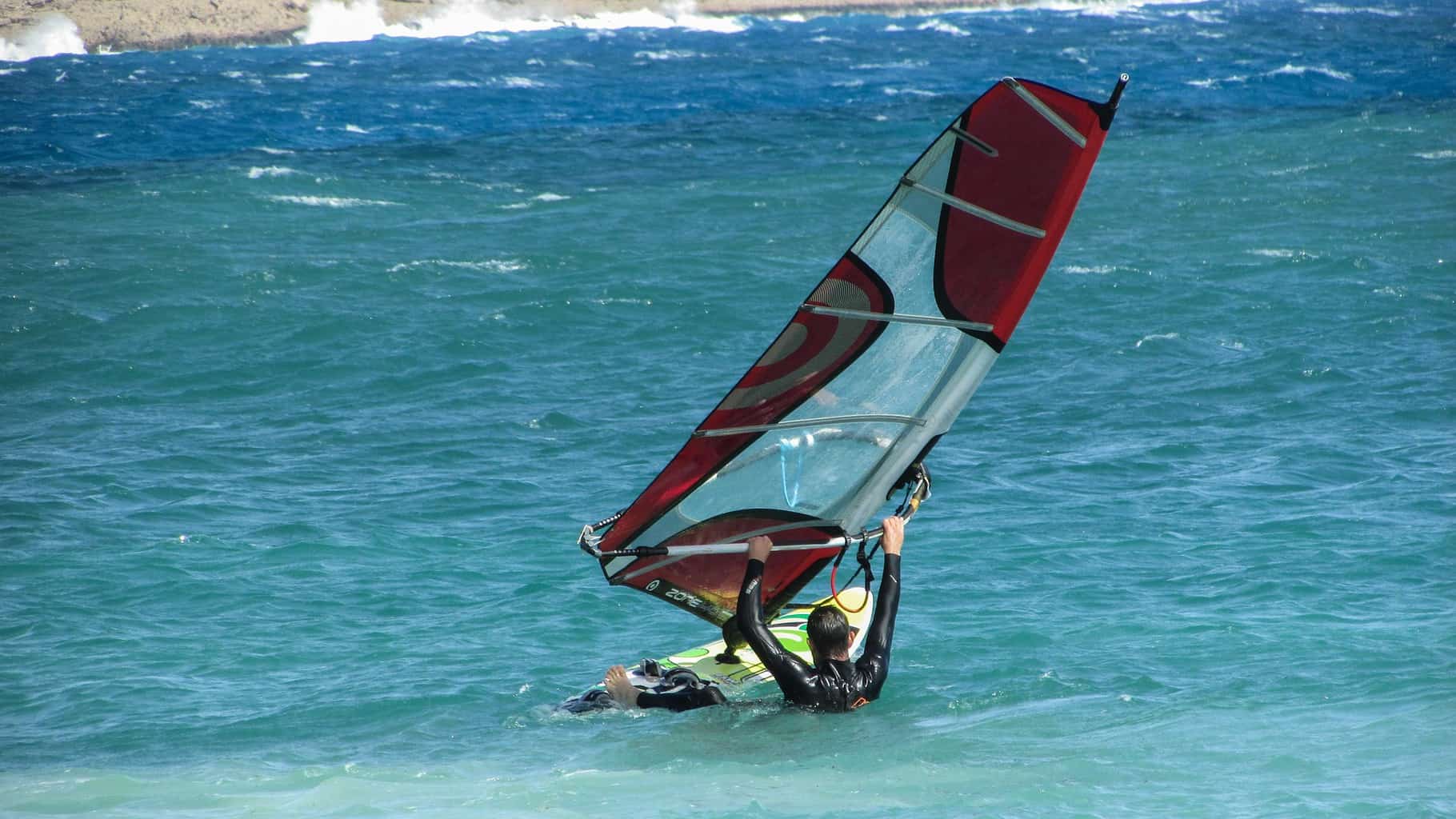
Is Windsurfing Harder Than Surfing? (Honest Comparison)
-
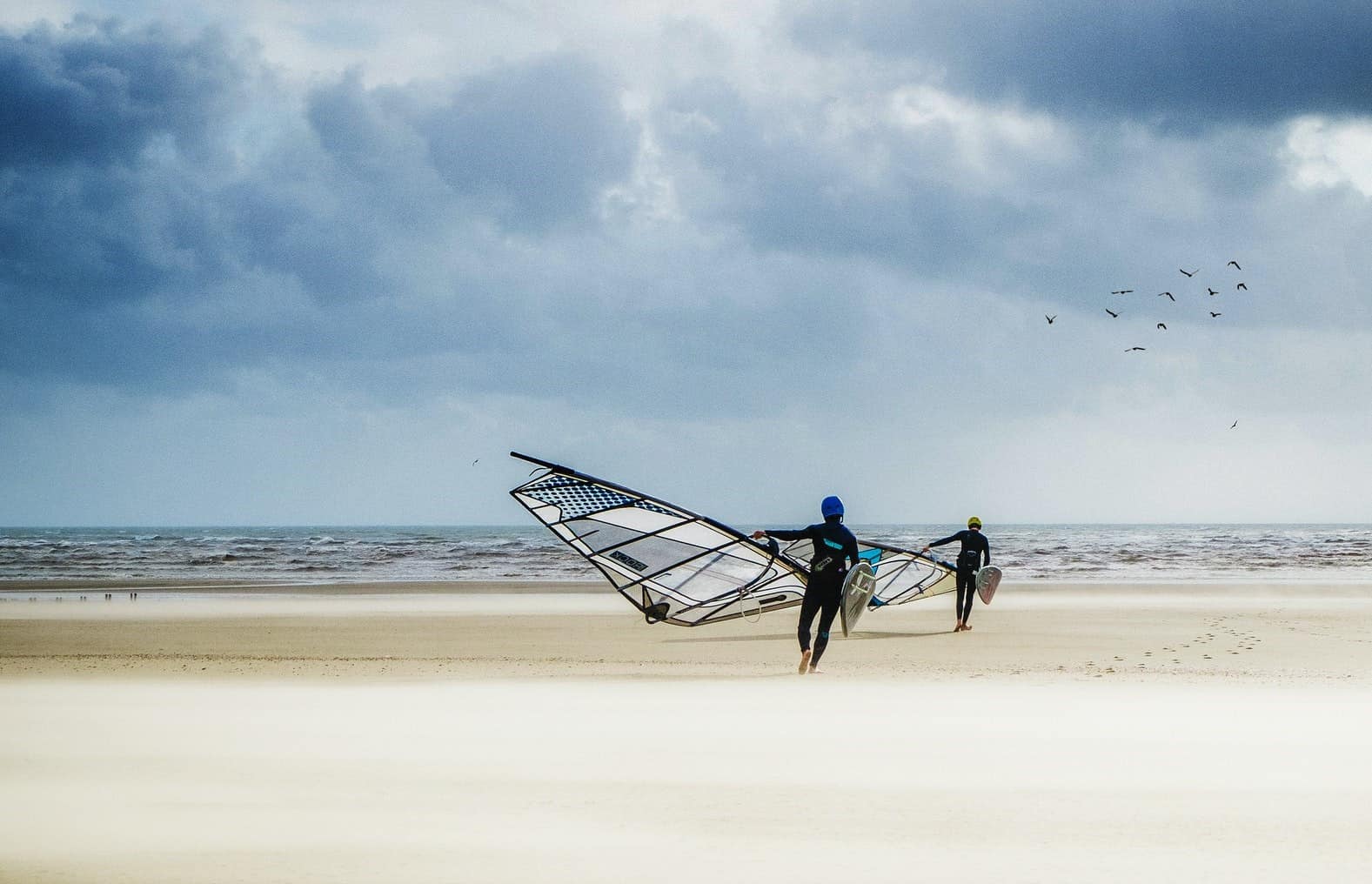
Is Windsurfing Still Popular? (An Insider’s Look at the Facts)











